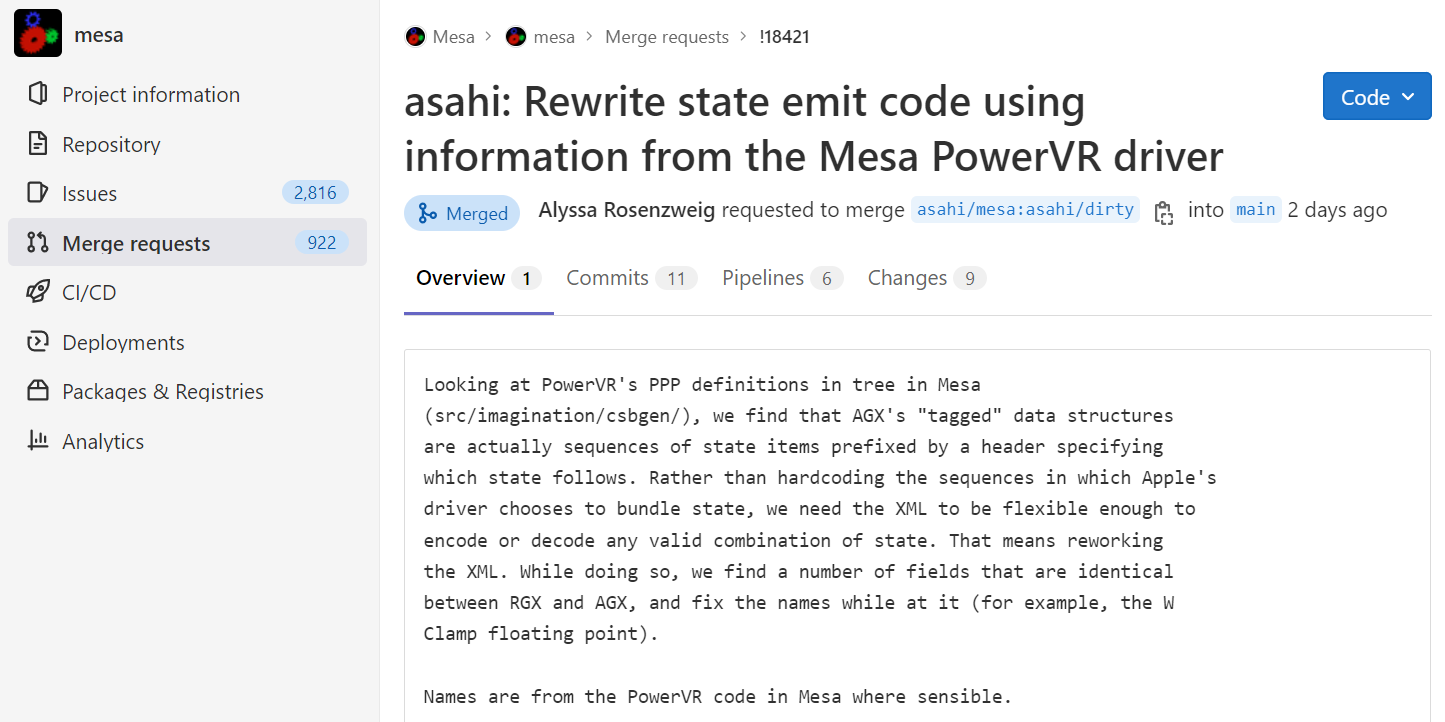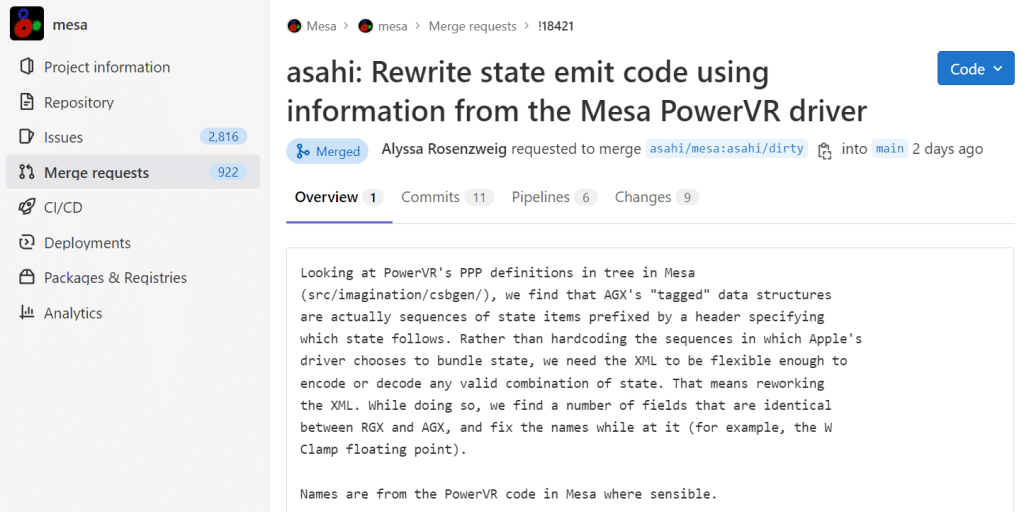Ever since Apple announced the M1 as its in-house Apple Silicon two years ago, with a powerful AArch64 processor and custom-designed graphics; A completely new design, still using the Imagination PowerVR graphics design that Apple used in earlier SoCs. The Asahi Linux team, which has been working on enabling Apple M1/M2 under Linux, found some similarities in their designs during their research.
Recently, some of the latest Mesa drive events have shown that there is more in common between PowerVR graphics hardware and Apple AGX graphics.In a new submission titled “asahi: Rewrite state emit code using information from the Mesa PowerVR driver‘ in the merge request says:
When looking at the tree structure of PowerVR’s PPP definition in Mesa (src/imagination/csbgen/), we find that AGX’s “tagged” data structure is actually a sequence of state items, prefixed by a header that specifies subsequent states. Instead of hardcoding the sequence in which the Apple driver selects bundled states, we need the XML to be flexible enough to encode or decode any valid combination of states. This means that XML needs to be redesigned. In doing so, we discovered many of the same fields between RGX and AGX, and fixed the names in the process (eg, W Clamp floating point).

The technology website Phoronix pointed out that Imagination released an open source PowerVR Vulkan driver earlier this year and incorporated it into the mainline Mesa; and Imagination has also been developing an open source DRM kernel graphics driver for PowerVR Rogue. It was by looking at the PowerVR Mesa’s code this time that its latest resemblance to Apple’s graphics hardware was discovered. Ultimately, though, the scope is limited, and it’s unclear to what extent the Apple M1/M2 graphics are derived from the PowerVR IP.
#Apple #M1M2 #PowerVR #graphics #share #similarities #News Fast Delivery
